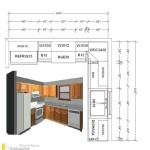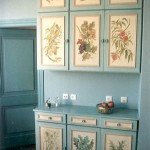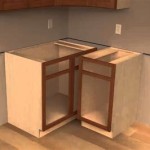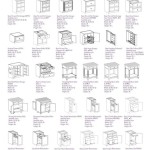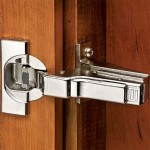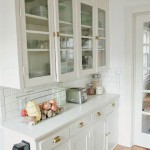Interior Design for Kitchen Cupboards: Maximizing Functionality and Aesthetics
Kitchen cupboards are the heart of any kitchen, housing essential items and playing a vital role in both functionality and aesthetics. The interior design of these cupboards can greatly impact the overall efficiency and appeal of your kitchen. By thoughtfully planning the layout, incorporating smart storage solutions, and considering the finishes, you can transform your kitchen cupboards into organized, functional, and visually pleasing spaces.
Optimizing Storage and Functionality
Maximizing storage space is paramount when designing the interior of kitchen cupboards. Utilize every inch efficiently to accommodate all your culinary essentials. This can be achieved through various strategies:
- Adjustable shelves: Adjustable shelves provide flexibility to accommodate items of varying heights. They allow you to customize the interior based on your specific needs, whether it's tall jars, baking trays, or cookware.
- Pull-out drawers: Pull-out drawers offer easy access to items stored at the back of the cupboard. They eliminate the need to reach deep into the cabinet, making it easier to find what you need.
- Spice racks: Dedicated spice racks keep spices organized and easily accessible. These racks can be mounted on the inside door or wall of the cupboard, maximizing space and ensuring effortless seasoning selection.
- Lazy Susans: Lazy Susans are perfect for corner cupboards, providing 360-degree rotation for easy access to all items within the cabinet.
- Dividers and organizers: Dividers and organizers create dedicated compartments for specific items, ensuring neatness and order. These can be used for utensils, cutlery, plates, or other kitchen essentials.
Choosing the Right Finishes and Materials
Beyond functionality, the aesthetics of your kitchen cupboards play a significant role in the overall ambiance of the space. Consider the following aspects when selecting materials and finishes:
- Cabinet material: Choose a material that complements your kitchen's style and durability needs. Popular options include wood, laminate, and metal. Wood offers a warm and classic look, while laminate is more budget-friendly and resistant to moisture. Metal cabinets provide a modern and sleek aesthetic.
- Cabinet color: Cabinet color can dramatically impact the feel of your kitchen. White cabinets create a bright and airy space, while darker colors add warmth and sophistication. Consider contrasting colors or choosing a palette that complements your countertop and backsplash.
- Hardware finishes: Cabinet hardware, such as knobs and pulls, adds the finishing touch to your kitchen design. Metallic finishes like brushed nickel, chrome, or brass can create a modern or traditional look. Consider the style and overall theme of your kitchen when selecting hardware.
- Lighting: Interior lighting within kitchen cupboards is essential for visibility and functionality. Under cabinet lighting provides adequate illumination for working in the kitchen. Consider LED strip lights for a sleek and energy-efficient solution.
Creating a Personalized Kitchen Design
The interior design of your kitchen cupboards should reflect your individual style and needs. Here are some tips for creating a truly personalized space:
- Consider your cooking style: If you frequently bake, consider dedicated storage solutions for baking sheets and pans. If you're a culinary enthusiast, prioritize space for cookware and utensils.
- Incorporate vertical space: Utilizing vertical space with tall cabinets and shelves maximizes storage capacity and creates a visually balanced kitchen.
- Prioritize accessibility: Place frequently used items within easy reach, while less-used items can be stored higher up or in less accessible locations.
- Add decorative touches: Incorporate decorative elements, such as patterned wallpaper or glass inserts, to personalize your kitchen cupboard interiors and create a visually appealing space.
By following these tips, you can transform your kitchen cupboards into functional and stylish spaces. Remember, a well-designed kitchen cupboard interior contributes to a more organized, efficient, and aesthetically pleasing kitchen, enhancing your overall cooking and dining experience.

Kitchen Wardrobe Cabinet Ideas For Your Home Designcafe

12 Stylish Kitchen Cupboard Designs Design Cafe

15 Stunning Kitchen Cabinet Designs In Singapore With 5 Essential Tips

Amazing Kitchen Cupboard Interior Design In Hyderabad

Modern Kitchen Cabinets That Suits Your Home

58 Best Contemporary Kitchen Design Ideas Interior Modern Cabinets Cabinet

Kitchens Jane Lockhart Design

15 Stunning Kitchen Cabinet Designs In Singapore With 5 Essential Tips

Kitchen Interior Design Modern Cupboard Designs

15 Unique Kitchen Drawer Design Ideas For Clever Storage Beautiful Homes
Related Posts

